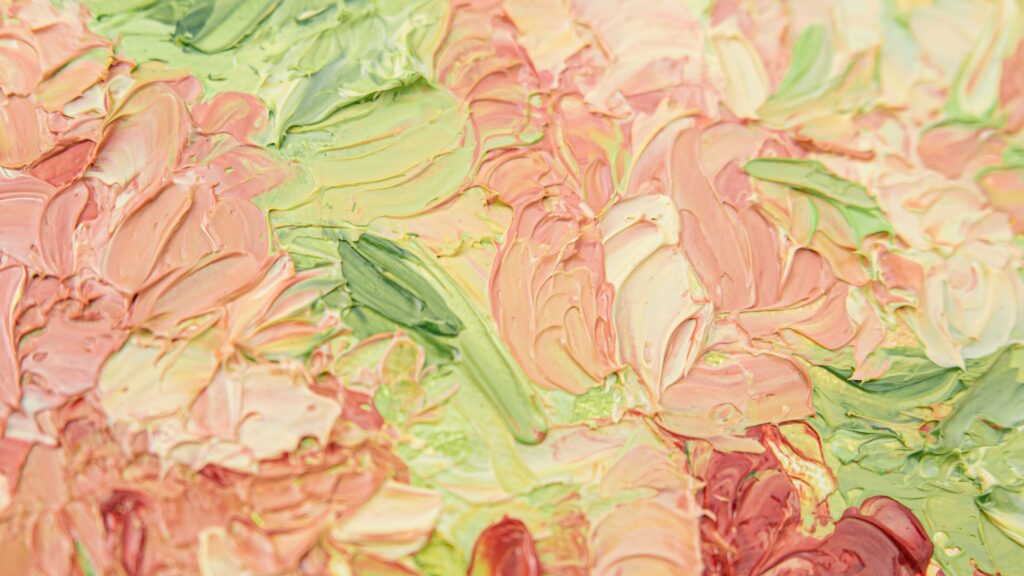
The differences between acrylic and oil paints: Which one should you use?
When it comes to painting, acrylic and oil are two of the most popular mediums, each with its unique characteristics and appeal. Whether you’re just starting out or looking to experiment with different painting styles, the choice between acrylic and oil paints can be a bit tricky. Both mediums have their strengths and challenges, and understanding their key differences will help you make the best choice for your artistic journey.
In this article, we’ll dive into the contrasts between acrylic and oil paints, covering their drying times, colour vibrancy, texture, and the pros and cons of each, so you can decide which one suits your style best:
- Drying time and application
- Colour and texture
- Pros and cons of each medium
- A decision based for your style: Acrylic or oil paints

Drying time and application
One of the most significant differences between acrylic and oil paints is their drying time. Acrylic paints are water-based and known for their incredibly fast drying times. When you apply acrylic paint, it typically dries within 15-30 minutes, depending on the thickness of the application and the environmental conditions. This quick-drying nature makes acrylics perfect for artists who want to work quickly, layering colours without having to wait long periods. If you enjoy a more spontaneous, dynamic approach to your art, acrylics may be your best bet. You can paint over layers within a short time, making it easier to experiment and refine your work.
On the other hand, oil paints are much slower to dry. The drying time for oil paints can range from several days to weeks, depending on the thickness of the paint and the specific medium used. This slower drying time allows for more flexibility, especially when blending colours and creating smooth transitions. If you enjoy taking your time with your work and want to be able to manipulate your paint over an extended period, oils offer a distinct advantage. However, the longer drying time can also be a downside for artists who prefer quick results or need to work in layers that require more immediate feedback.
Colour and texture
When it comes to colour vibrancy and texture, both acrylic and oil paints offer unique benefits. Acrylics are known for their bright, vivid colours. Since they dry quickly and are water-based, they often produce a slightly matte finish, but they can be manipulated to achieve a range of effects depending on the amount of water or acrylic medium added. You can create smooth, solid layers, or if you prefer, add texture by incorporating different gels and pastes. Acrylic paints tend to retain their colour intensity as they dry, giving them a fresh and vibrant appearance. They also allow for quick layering, which can be advantageous for creating contrast and dimension in your work.
In contrast, oil paints offer a rich, luxurious depth that is hard to replicate with acrylics. The oils in the paint give it a smooth, buttery texture that makes blending colours incredibly easy, resulting in a velvety, luminous finish. Oil paintings often have a glossy sheen once dry, enhancing the depth and richness of the colours. Because oil paints take longer to dry, they allow artists to work on the same area for much longer, which is ideal for creating gradients, soft transitions, and detailed textures. If you’re aiming for a more traditional, detailed look, oils can provide a sense of depth and realism that acrylics may not be able to match. However, the glossiness of oil paint can also be a drawback, as it can sometimes be difficult to achieve the matte finish that some artists may prefer.

Pros and cons of each medium
Both acrylic and oil paints have their own set of pros and cons, making them suitable for different styles and preferences.
Acrylic paints: Pros
- Quick Drying Time: Ideal for artists who want to work fast or build up layers quickly.
- Easy Clean-Up: Acrylic paints are water-based, so brushes and tools can be cleaned easily with just soap and water.
- Versatility: Acrylics can be used on a variety of surfaces, including canvas, paper, wood, and fabric, making them highly versatile.
- Affordable: Generally, acrylic paints are more affordable than oil paints, which can be a deciding factor for beginners or artists on a budget.
- Less Toxic: Since they are water-based, acrylics tend to have fewer harmful fumes compared to oils, which require solvents like turpentine.
Acrylic paints: Cons
- Less Blending Time: The fast drying time means you don’t have much opportunity to blend colours or work on your paint for long periods.
- Matte Finish: While you can achieve different textures with acrylics, they often have a more matte finish compared to the glossy sheen of oils.
- Limited Depth: Although acrylics can produce vibrant colours, they sometimes lack the depth and richness found in oil paintings.
Oil paints: Pros
- Slow Drying Time: Oil paints provide plenty of time to blend and layer, allowing for detailed work and smoother transitions.
- Rich, Luminous Colours: The depth and vibrancy of oil paints create a rich finish that is hard to match with other mediums.
- Superior Blending: The longer working time allows for exquisite blending of colours, perfect for creating realistic gradients, shadows, and subtle textures.
- Classic Appeal: Oil painting has a long history, and the medium continues to be favoured by many professional artists for its quality and timeless look.
Oil paints: Cons
- Longer Drying Time: The slow drying time can be frustrating for artists who prefer to work quickly or need faster results.
- More Complex Clean-Up: Oil paints require solvents like turpentine or mineral spirits to clean brushes and tools, which can be a hassle and potentially harmful if not used in a well-ventilated area.
- More Expensive: Oil paints, along with the required cleaning materials and mediums, tend to be more costly than acrylics, which can be a disadvantage for beginners.
- Toxicity: The solvents used with oil paints can produce strong fumes, making it essential to work in a well-ventilated area and use non-toxic alternatives when possible.
A decision based for your style: Acrylic or oil paints
The decision between acrylic and oil paints ultimately comes down to your personal style, preferences, and the type of artwork you want to create. If you enjoy quick results, vibrant colours, and easy clean-up, acrylics might be the best choice for you. Their versatility and fast drying time make them ideal for artists who want to experiment and work quickly.
On the other hand, if you’re drawn to the depth, richness, and detailed blending that oils provide, and you don’t mind the longer drying time, oils are the perfect medium for creating traditional, textured masterpieces.
Let’s recap:
- Drying time: Acrylics dry quickly (15-30 minutes), while oils take days to weeks, offering more time for blending.
- Colour and texture: Acrylics have vibrant colours and a matte finish, while oils offer deep, rich colours with a glossy, smooth texture.
- Acrylic pros: Quick drying, easy clean-up, affordable, versatile, and less toxic.
- Oil pros: Superior blending, rich depth, classic appeal, ideal for detailed, traditional artwork.
- Conclusion: Acrylics are great for fast, vibrant work; oils are better for depth, blending, and detailed, traditional pieces.
Ultimately, both acrylics and oils have their own unique qualities and challenges, but no matter which one you choose, the most important thing is to enjoy the creative process and have fun experimenting. Happy painting!